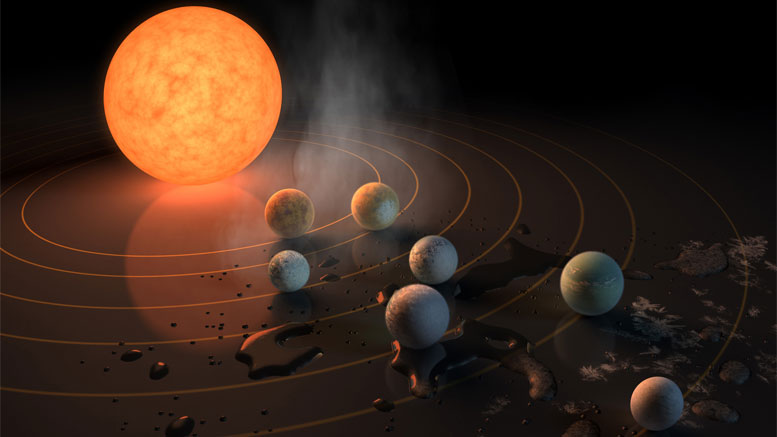
The TRAPPIST-1 system, depicted here in an artist’s conception, contains seven roughly Earth-sized planets orbiting a red dwarf, which is a faint, low-mass star.
Two separate teams of researchers have identified major challenges for the development of life in the TRAPPIST-1 system. The red dwarf star in this system spins rapidly and generates energetic flares of ultraviolet radiation and a strong wind of particles. The research teams say the behavior of this red dwarf makes it much less likely than generally thought that the three planets orbiting well within the habitable zone could support life.
The first team, a pair of CfA theorists, considered many factors that could affect conditions on the surfaces of planets orbiting red dwarfs. For the TRAPPIST-1 system they looked at how temperature could have an impact on ecology and evolution, plus whether ultraviolet radiation from the central star might erode atmospheres around the seven planets surrounding it. These planets are all much closer to the star than the Earth is to the Sun, and three of them are located well within the habitable zone.
“The concept of a habitable zone is based on planets being in orbits where liquid water could exist,” said Manasvi Lingam, a Harvard researcher who led the study. “This is only one factor, however, in determining whether a planet is hospitable for life.”
Lingam and his co-author, Harvard professor Avi Loeb, found that planets in the TRAPPIST-1 system would be barraged by UV radiation with an intensity far greater than experienced by Earth.
“Because of the onslaught by the star’s radiation, our results suggest the atmosphere on planets in the TRAPPIST-1 system would largely be destroyed,” said Loeb. “This would hurt the chances of life forming or persisting.”
Lingam and Loeb estimate that the chance of complex life existing on any of the three TRAPPIST-1 planets in the habitable zone is less than 1% of that for life existing on Earth.
In a separate study, another research team from the CfA and the University of Massachusetts in Lowell found that the star in TRAPPIST-1 poses another threat to life on planets surrounding it. Like the Sun, the red dwarf in TRAPPIST-1 is sending a stream of particles outwards into space. However, the pressure applied by the wind from TRAPPIST-1’s star on its planets is 1,000 to 100,000 times greater than what the solar wind exerts on the Earth.
The authors argue that the star’s magnetic field will connect to the magnetic fields of any planets in orbit around it, allowing particles from the star’s wind to directly flow onto the planet’s atmosphere. If this flow of particles is strong enough, it could strip the planet’s atmosphere and perhaps evaporate it entirely.
“The Earth’s magnetic field acts like a shield against the potentially damaging effects of the solar wind,” said Cecilia Garraffo of the CfA, who led the new study. “If Earth were much closer to the Sun and subjected to the onslaught of particles like the TRAPPIST-1 star delivers, our planetary shield would fail pretty quickly.”
While these two studies suggest that the likelihood of life may be lower than previously thought, it does not mean the TRAPPIST-1 system or others with red dwarf stars are devoid of life.
“We’re definitely not saying people should give up searching for life around red dwarf stars,” said Garraffo’s co-author Jeremy Drake, also from CfA. “But our work and the work of our colleagues shows we should also target as many stars as possible that are more like the Sun.”
The paper by Lingam and Loeb was published in the International Journal of Astrobiology. The paper by Graffito et al has been published by The Astrophysical Journal Letters.
References:
- “Physical constraints on the likelihood of life on exoplanets” by Manasvi Lingam, and Abraham Loeb, 6 July 2017, International Journal of Astrobiology.
DOI: 10.1017/S1473550417000179
arXiv - “The Threatening Environment of the TRAPPIST-1 Planets” by Cecilia Garraffo, Jeremy J. Drake, Ofer Cohen, Julian D. Alvarado-Gómez and Sofia P. Moschou, 12 July 2017, The Astrophysical Journal Letters.
DOI: 10.3847/2041-8213/aa79ed
arXiv

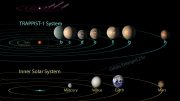
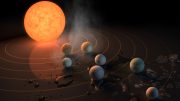

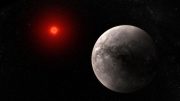
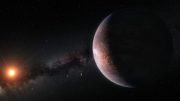
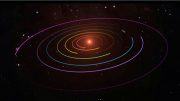
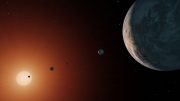
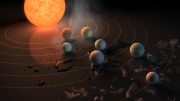
Be the first to comment on "Astronomers Identify Major Challenges for the Development of Life in TRAPPIST-1 System"